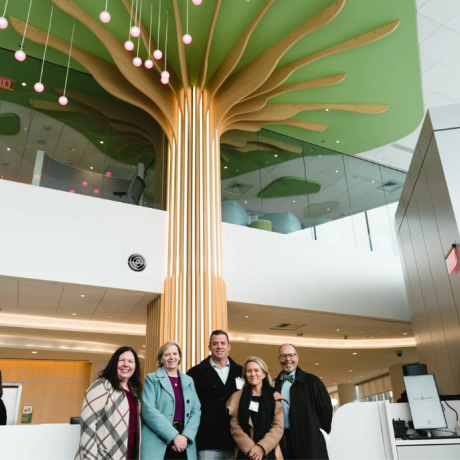Living with Life-long Conditions
At 17, Nicole is a sprinter and jumper for her school’s track team; a soccer player; a ballet, tap, and jazz dancer; and a member of her school’s drama club, in addition to being an ace student. You’d hardly think that she could find time to be sick. But she did.
“I was in eighth grade when it all started,” Nicole says. “I was just really sick that whole year and the following summer. Then I started my freshman year and I was still sick, especially in the mornings. I would feel awful, with stomach pains and bad nausea. I couldn’t remember anything from class, which really affected the first part of my freshman year.”
Getting to the Bottom of Things
It got bad enough that her mother, Laurie, took her to the Gastroenterology Division at Connecticut Children’s. There, the team took some blood tests and immediately found the answer: Nicole had the gene for celiac disease—an intolerance for gluten. That diagnosis was confirmed by a subsequent endoscopy, so Nicole stopped eating foods with gluten, which should have solved the problem. But it didn’t.
“I stopped eating gluten in December, but I still felt really sick in the new year, 2020,” says Nicole. “So we were just really confused. Why did I still feel so sick?”
The answer came in an unexpected way: a friend playfully punched her in the stomach. The punch wasn’t very hard, but it produced a bruise on Nicole’s stomach. When the bruise didn’t go down in a few days, her mother took her to the doctor. “They said that I had a lot of sugar in my blood and urine,” Nicole says. “So they sent me to Connecticut Children’s the next morning, and the bloodwork there showed that I had type 1 diabetes.”
Developing a New Routine
The doctor’s started Nicole on insulin injections and, after a few months, moved her to an insulin pump, which really simplified her life. “Since then,” Nicole says, “everything’s pretty normal. I only go to Connecticut Children's every three months to get checkups. And that's really it.”
That’s what Nicole says. Her mother has a different take on it: “Nicole downplays a lot of this, but it was really an awful, awful year. She had serious memory problems because of the gluten. When she took her midterm for her Latin test, she went up to the teacher in the middle of the exam and said, ‘You know, I don't think you taught us this.’ She had no recollection of that chunk of time. She would read a book and have no memory of what was in it. So testing was hard.”
And that was just the gluten reaction. Her diabetes created its own set of challenges. “I think the celiac diagnosis was disheartening,” Laurie says, “because you can’t live, you’re not a normal kid--you go to a party and have to bring your own pasta; you can’t trust going out to a restaurant. It was devastating for a teenager, but it was more of an inconvenience. The diabetes, though, that’s forever. And we have some scary episodes. She'll go to soccer, and it’s unpredictable. She could have her best day ever. And the next day it could be her worst day ever, even though she’s doing all the right things. But she’s just been such a trooper through it all.”
Comfort from Care Providers
Happily, the team that works with Nicole at Connecticut Children’s includes a nurse who is herself celiac. “They couldn't be a more perfect match,” Laurie says. “She shares all her tips and she is amazing, just unbelievable. So is her diabetes educator, Carry, an APRN who has both celiac disease and type 1 diabetes. We are so lucky to be in a state where we are 20 minutes away from this amazing children’s hospital.”



